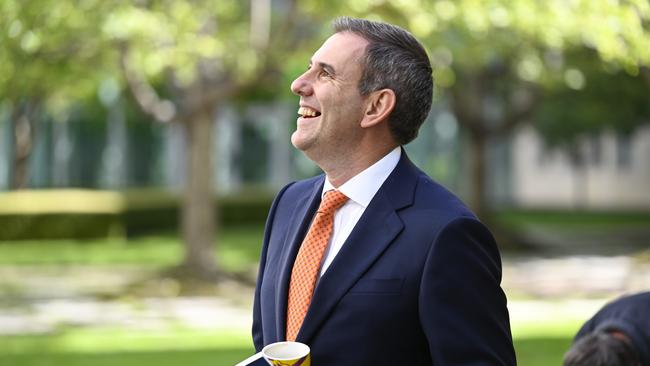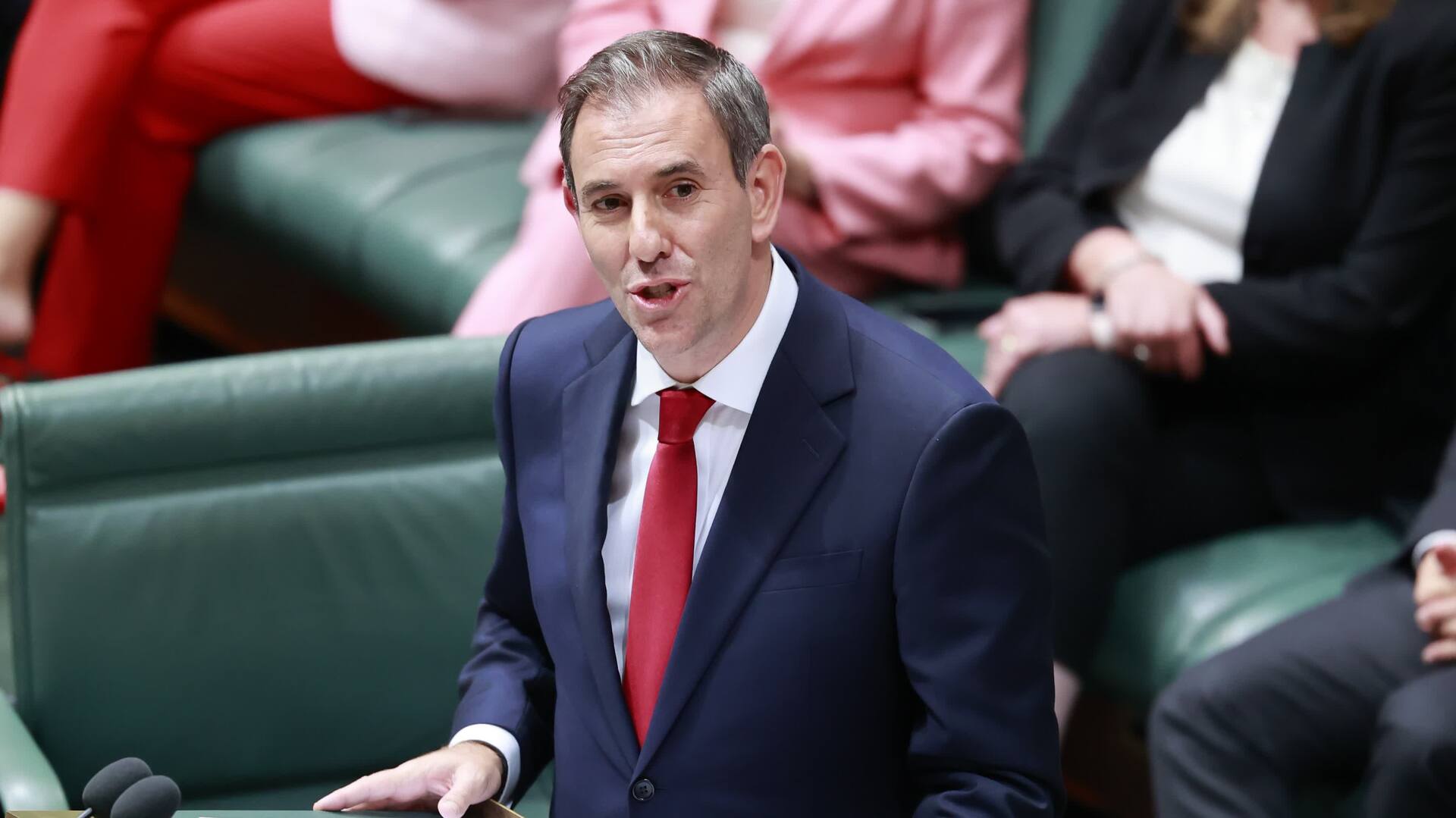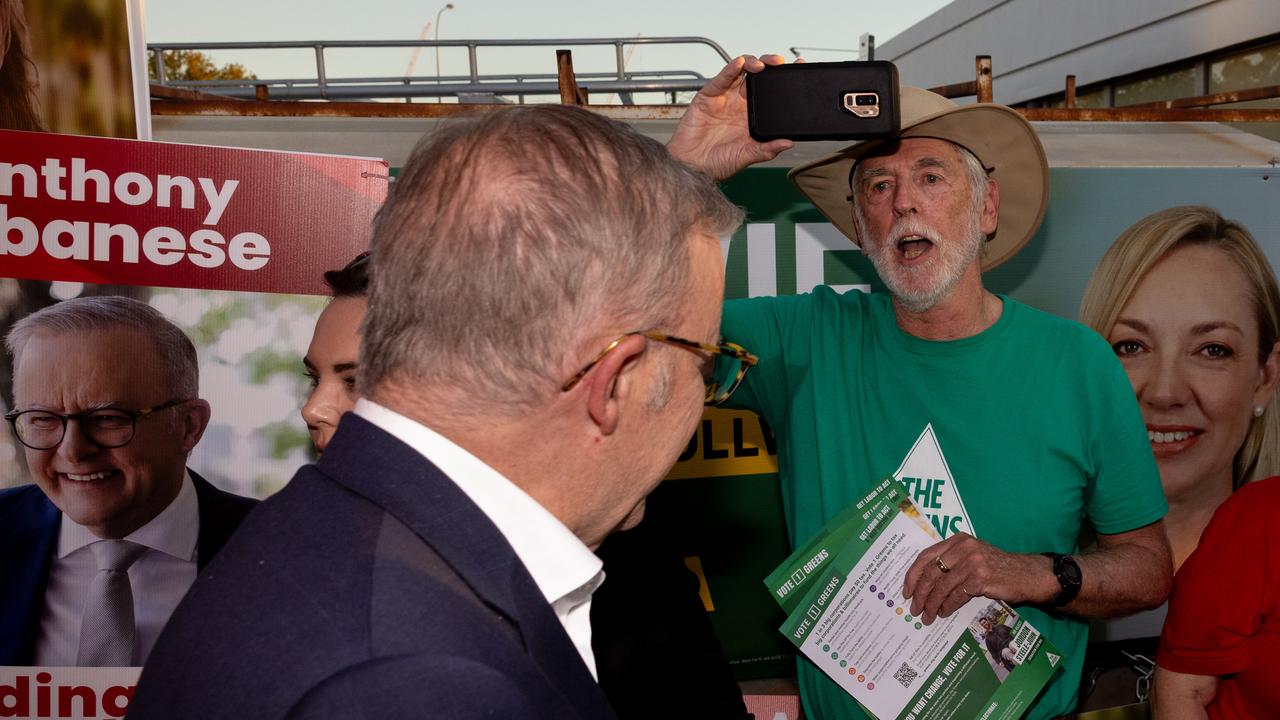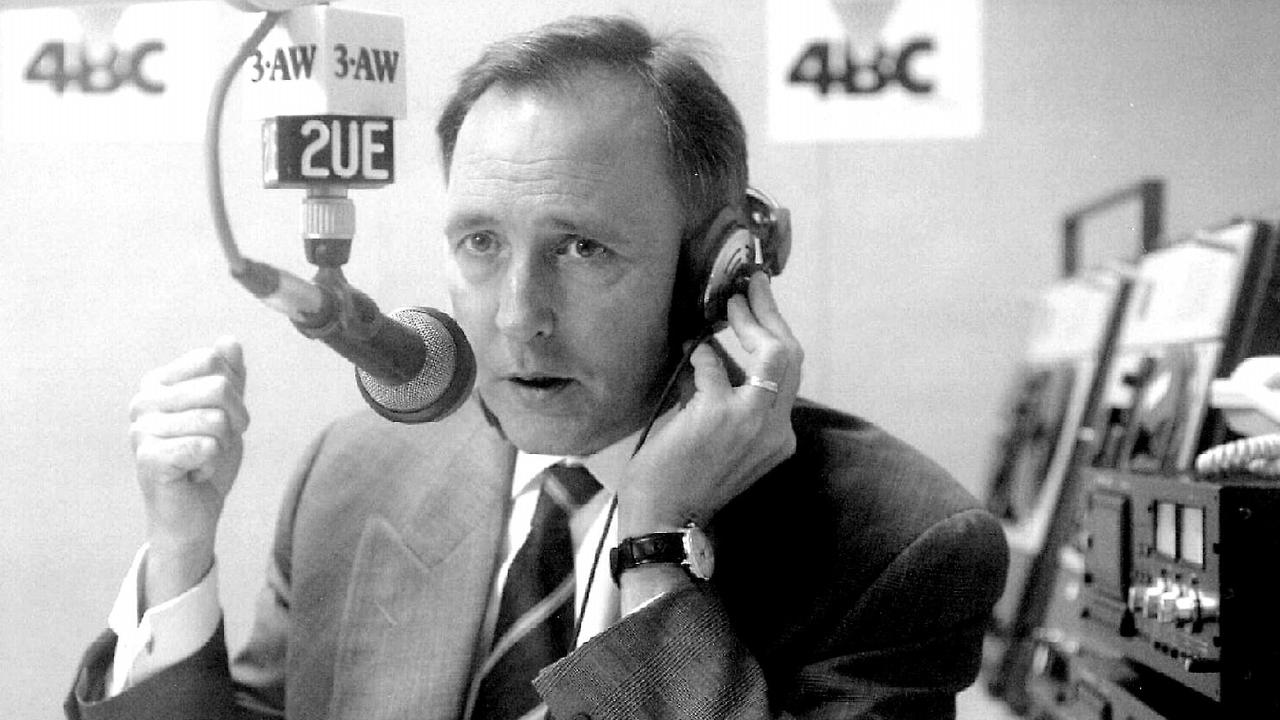Sunny Jim Chalmers fails to save for rainy days ahead
While there is a small degree of relief, there is no real reform and absolutely no repair.

It’s a lot to take in, especially if you decide to wade through the weeds of the hundreds of pages of budget papers. But it’s always worthwhile standing back and assessing the big themes of the week.
What does the budget signify about the government’s view of its role in economy? What weight is being placed on immediate political considerations compared with longer-term structural challenges? Was this week’s budget one for Australia or one for Labor?
In keeping with the partiality of the Treasurer, Jim Chalmers, for alliteration – something he has in common with teenagers – the declared theme of this year’s budget is relief, repair, reform.
Take it from me, while there is a small degree of relief for voters – the electricity rebate is a case in point – there is no real reform in the budget and absolutely no repair.

On this last point, just look at the figures. Government net debt goes from $556bn this financial year to $768bn at the end of the forward estimates period in 2028-29. Net interest payments rise from $15bn this year to $28bn, a close to doubling.
The figures on government spending are equally alarming. This financial year, government payments are expected to rise by 6 per cent in real terms, which is historically very high.
Recall that when Wayne Swan was Labor treasurer he promised to restrict the annual growth of government spending to 2 per cent a year, although admittedly he failed to stick by his own rule. Next financial year, government spending will rise by 3 per cent.
With this backdrop, we are expected to believe the Treasurer’s claim that payments will grow by a mere 1.7 per cent a year across the seven years to 2028-29. Almost every economic commentator has cast doubt on this claim. Voters are likely to respond along the line: tell him he’s dreamin’.
The tag of repair can be quickly discarded, which leaves reform and relief. One example of reform being touted by the government is the elimination of non-compete clauses in contracts covering workers earning less than $175,000.
Evidently we are expected to believe that this productivity-enhancing measure will add $5bn to the economy. The reality is that the arguments for and against non-compete clauses are complex, and this measure overwhelmingly will affect smaller businesses.
If firms cannot protect their client lists or their intellectual property, one effect may be an unwillingness to take on new workers and to provide training. Economists are always looking out for unintended consequences.
The bottom line here is that this week’s budget marks a substantial deterioration in our budgetary position, with the two years of surpluses effectively blown up. It is the antithesis of repair. When it comes to relief, we are now borrowing to provide across-the-board electricity bill relief and small tax cuts. And reform is largely missing.
Nonetheless, it has become increasingly apparent that this Labor government takes the view that any problems that citizens – read voters – encounter should be remedied by government action, be it handouts or in-kind support.
Having trouble paying the electricity bill? A government rebate. Trouble getting a bulk-billed GP appointment? The government will deal with that. Trouble paying the rent? The government will increase rent assistance.

Of course, getting the government to help those in society who are least able to make ends meet is widely accepted. But recent Labor governments have been shifting the goal posts. The clear trend is towards government-funded universal entitlements with no or weak means testing.
This approach is the opposite of the Keating-Walsh model of budget management in which strict means-testing was regarded as both moral and fiscally responsible. The government would help those on low incomes but everyone else was on their own. It was the principal means by which government spending was dramatically pruned in the late 1980s, with government payments as a proportion of GDP falling from 27.5 per cent in the middle of the decade to 22.9 per cent in 1989-90. (Getting rid of ridiculous grants also helped.)
The alternative model that has emerged is large social programs that provide across-the-board entitlement with few exceptions. Think here the National Disability Insurance Scheme, aged care, childcare. These programs are completely free of means testing or close to. In the case of childcare, for instance, families with incomes of up to $530,000 a year are entitled to fee relief for centre-based care.
Social programs end up being effectively demand-driven and expensive. It is akin to the old Scandinavian cradle-to-grave welfare, except this model proved unaffordable for those countries and has been significantly modified.
This shift to universal entitlements makes budget management much more difficult, certainly compared with capped programs. We see this with the NDIS where the incentives to qualify for the program are extremely strong while the incentives to exit are weak. But spending on aged care and childcare is also exploding, with funding following participation.
Another emerging theme of Labor’s budget is the pretence that spending government money is the solution to addressing complex social problems such as the deterioration in social cohesion and rising domestic violence. Voters are led to believe that simply committing a large sum of money will be effective in dealing with these damaging and corrosive developments; a simplistic route of A equals spending money to B more social cohesion/less domestic violence.
Take the close to $180m committed in the budget to “strengthen social cohesion”. When you look at the items that are being funded under this heading, there are clearly some winners.
For example, $15m has been allocated to a sports and education hub in Melbourne run by former Richmond footballer Bachar Houli’s foundation.
There is another $10m to support “independent multicultural media” and will go to improving technology for the transition to sustainability. There is also $1.6m to “provide mental health support” for Australians affected by the Israel-Hamas war and $20m to fund two Chinese museums. If you think this kind of spending will do little to promote social cohesion, you wouldn’t be wrong. The real purpose is to provide a rationale – in this case “social harmony” – to satisfy the pleas of those seeking “free” money from taxpayers.
Finally, on the economic outlook contained in the budget. At heart, there is major contradiction. According to Statement 1: Budget Overview, “The global economy is facing considerable uncertainty and growth is expected to remain subdued over the next three years.”
We are then expected to believe that economic growth will be 2.25 per cent next financial year and 2.75 per cent by the end of the forward estimates. These figures are high by recent standards; they also are unbelievable.
But here’s the point: in circumstances of enhanced global uncertainty, governments should be strengthening fiscal positions, not weakening them. This then provides scope to take corrective action if things do deteriorate.
Sadly, sunny Jim doesn’t seem to take this view: saving for a rainy day is seen as so passe.








Budget week is always a busy one for economists. As soon as the dust is settled on the government’s budget handed down on the Tuesday, the budget-in-reply speech is delivered by the opposition leader on the Thursday.